Facial Eczema and Alpacas by Geoff Neal BVSc
Manawatu Veterinary Services
Facial eczema is one of the most important and potentially dangerous diseases posing a threat to the alpaca industry in the North Island of New Zealand during the Summer and Autumn months. Alpaca are one of the most sensitive animal species to Facial Eczema, more sensitive than sheep, cattle, deer and goats. The following are probably some of the more commonly asked questions regarding facial eczema in alpaca.
What is Facial Eczema and how do my Alpaca get the disease?
Facial eczema is a disease process caused by a fungus, Pithomyces chartarum, that produces spores as part of its reproductive process. These spores contain a chemical called sporidesmin, which is the toxic compound that causes disease.
The spores are found in the leaf litter of pasture and are consumed by the alpaca when it eats the pasture. On entering the stomach the spores are broken down and the toxin is absorbed across the stomach lining, into the venous bloodstream. The venous blood from the stomach flows directly back to the liver, where the sporidesmin toxin undergoes an enzyme oxidation and reduction pathway within the liver cells, the by-products of which are oxygen free radicals. The free radicals released by this process cause damage (necrosis) of the liver cells and the cells of the biliary system within the liver.
This liver damage causes the disease process of Facial Eczema by reducing the ability of the liver to process normal metabolic and digestive toxins, leading to a build-up of these toxins within the bloodstream. Many of these toxins are photodynamic (react with UV light) causing damage to the blood vessels that they are flowing through. The more serious diseases seen with Facial Eczema are related to complete liver failure.
When is the greatest risk period for Facial Eczema and why?
The fungus that produces the spores containing the sporidesmin toxin requires a number of environmental conditions to occur in order for it to survive and replicate. The fungus only grows on dead leaf litter, not green growing grass, and so the times of year when grass is dead or has a lot of dead litter at the base is in the Summer and Autumn. Topping of pasture will increase the amount of dead leaf litter at the base of the pasture. The other environmental conditions required by the fungus are a base grass temperature of >10 degrees Celsius continuously for a period of 2-6 days, and a degree of moisture equivalent to 5mm rain. Heavy dews and high relative humidity can exert the same moisture requirement as rain itself.
What are the signs of Facial Eczema in Alpacas?
The usual symptoms seen in other species affected with Facial Eczema include:
Irritation
Restlessness
Skin swelling, crusting and oozing Decreased production/growth rates Abortion
Death
In alpaca the signs can present as any of the above but the most common clinical sign seen is sudden death. Alpaca are reasonably stoic animals and do not often show the subtle early signs that other species do until the liver damage is very severe.
How do you diagnose Facial Eczema in Alpacas?
The diagnosis of facial eczema can be made based on clinical signs in the live animal but that is not very accurate as there are other diseases that can resemble Facial Eczema in the early stages e.g. Ryegrass staggers, rickets.
In a live animal a diagnosis is usually confirmed by a blood test looking at the level of an enzyme called gamma glutamyltransferase (GGT). GGT is released by the liver and biliary cells when they are damaged and can result in dramatic increases in the GGT levels. Interpretation of GGT levels are quite difficult for several reasons, one of which is that the enzyme has a long breakdown time (half-life) in the body.
In a dead animal, the diagnosis can be made on post-mortem examination and confirmed by laboratory examination of the liver under a microscope.
Can you treat Facial Eczema in an Alpaca?
The simple answer is no. Facial Eczema causes permanent liver damage that can heal to a certain degree, but never back to normal. Alpacas with mild symptoms can be nursed along with supportive care, reduced protein feeds, and shade (complete darkness is best).
A note on the care of a pregnant alpaca with Facial Eczema. Many of these animals will die after delivery of the cria due to liver failure. Some of the literature (including the association handbook) recommend aborting pregnant alpaca rather than allowing them to give birth. This is WRONG !!! The drugs used in the induction of parturition are severely contraindicated in any animal species with liver disease, and are likely to kill the alpaca and her unborn cria.
How can you prevent Alpacas from getting Facial Eczema?
This is a big question with a multi-component answer to it. The first part of prevention is to assess the risk posed to the alpaca. This basically involves monitoring the environmental conditions required for the growth of the fungus, and monitoring the levels of spores in the pasture being the other. Monitoring the environmental conditions is simple and done visually or in the more complex sense by looking at regional weather data indices.
Spore level monitoring can be done either by using regional or local information form sources such as AgriQuality, MAF, your local vets, newspapers etc. as a guide, or by directly counting the spore levels in your paddocks. The details of how to do spore counts are on the supplementary sheet provided.
The main issue with spore count levels is interpretation of the risk. The spore levels described as safe for other livestock species are not necessarily safe for alpaca to graze. As to exactly what is a safe level of spore exposure for alpaca is not known and very difficult to assess. There are probably few owners willing to sacrifice their animals to see exactly how much toxin they can safely handle.
Long-term consumption of low levels of spores can be as dangerous as short-term consumption of a high spore level because the effects of the toxin on the liver are cumulative.
The other side of preventing alpaca from getting Facial Eczema is to reduce the likelihood of spore exposure to the animals liver. This can be done in one of two ways, either reduce the number of spores on the pasture or stop the toxin from damaging the liver should spores be consumed by the alpaca.
To reduce the levels of spores on the pasture involves altering the environmental conditions for the fungus. Pasture control to avoid excessive dead material at the pasture base, reduces the available surface area for the fungus to grow on. Topping can help control grass quality but will also increase dead matter at the pasture base.
The easiest way to stop the fungus growing is to kill the fungus off by spraying with a fungicide spray. There are numerous products on the market and cost between $13-28 per hectare for the chemical alone. The point often missed by people with fungicide spraying is that it works best when there are minimal spores present, but when a period of rapid fungal growth is anticipated. Fungicide sprays kill the fungus not the spores. The length of protection gained from spraying is usually 6-8 weeks depending on the product used and application rates.
Most fungicide sprays for Facial Eczema are only 60-70% effective so additional protection is needed to ensure the safety of the animals grazing the pasture.
In this case we are referring to the use of zinc.
Why is zinc used to protect against Facial Eczema?
Zinc is used to help protect against Facial Eczema because it disrupts the oxidation-reduction pathway that releases the oxygen free-radicals which cause the liver damage.
The required level of zinc for protection from Facial Eczema is 2g elemental zinc per 100kg liveweight per day. Commercially available zinc comes in two main forms, zinc oxide and zinc sulphate. Zinc sulphate is used for cattle through water troughs. This is of little use to alpaca owners as alpaca consume only small amounts of water at irregular times. The addition of zinc sulphate to water troughs also makes the water very bitter, further deterring their consumption.
Zinc oxide comes in two forms for use in animals; powdered or as a bullet (called a Time Capsule). Time capsules do not appear to be of any use in alpaca in their present formulation as the outside coating is broken down very rapidly by alpaca, resulting in very rapid absorption of the zinc but a very short duration of effect.
Zinc oxide powder is either made up into a slurry and drenched directly into the animal or it is incorporated into feed and fed as a supplement. The drenching of alpaca with zinc oxide slurries is difficult and would have to be repeated every 3-4 days to be effective. A cautionary note. Never drench animals, including alpaca, with zinc sulphate slurries. You will likely kill the animal you are trying to protect.
Incorporation of zinc oxide into feeds is the easiest way to get alpaca to consume zinc. You can sprinkle the powder over feed or in some cases pre-made pellets containing zinc are available. The same problem occurs with zinc oxide on food as occurs with zinc sulphate in water; it is very bitter, and so a disguising agent will need to be added to the feed in order for most animals to eat treated feed. Fortunately molasses works quite well.
Are there any problems with feeding too much zinc to Alpacas?
There are issues with feeding excessive amounts of zinc to any animals. Excessive consumption of zinc for extended periods of time in other ruminant species can lead to pancreatic disease, and copper deficiency. In sheep and cattle the recommended maximum continuous zinc supplementation period is 100days. The recommended time period in alpacas is not really known.


